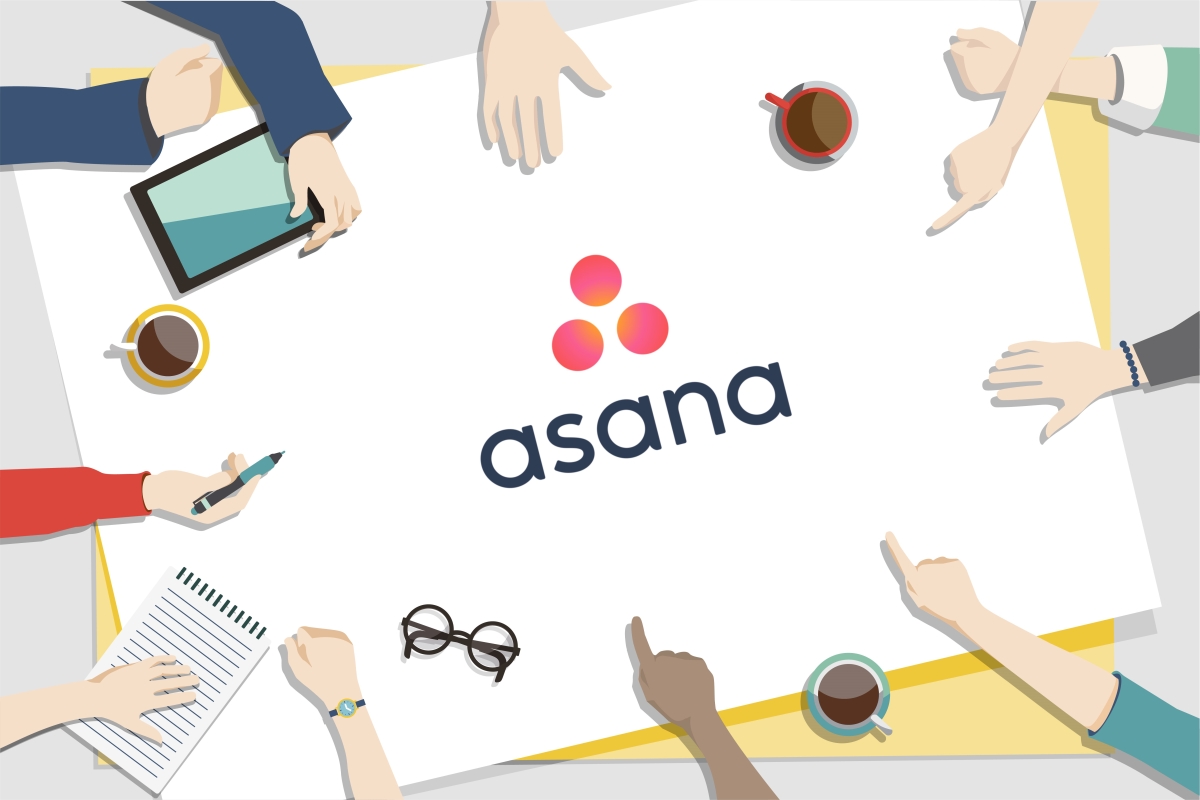Asana: Kick projects into high gear
Andika Pratama2024-09-27T17:31:58+08:00
Are you yearning for something that could boost productivity at work? Asana is the solution for you. It’s a collaborative tool that helps teams track their work, from tasks to workflows to even projects. Don’t confuse it for a full-scale project management platform, however, because it doesn’t have resource management tools, budgeting and expense tracking, or other features you might expect in that type of app.
What is Asana?
Asana is a work management tool for managing tasks and other work among a group of people. In more specific terms, Asana keeps track of who is responsible for what task and all the information related to it including all the necessary steps, due dates and so forth.
One of its signature traits is its flexibility. This means you get to decide what kind of work to track and exactly how to use it. In other words, subscribers have the option to use Asana in a wholly unique way or in a more guided way by making use of options that Asana provides.
Think about the difference between playing a tabletop board game and having a deck of cards. Asana is like a deck of cards, whereas project management software is like a board game. Board games come with rules. It’s unusual for players to stray too far from the included instructions, although players might agree to some modifications from time to time.
With a deck of cards, however, all the players first have to decide what game they want to play and which rules to follow. You could play a well-known game with established rules, such as five-card draw or invent your own game. Even with a predefined card game, everyone has to agree on which version to play. There’s a general understanding of how the game will go but it’s different from a board game that includes a set of rules.
With Asana, there are just as many predefined ways you can use it, like card games with rules, as there are custom ways, like making up your own card game or adapting an existing game.
One more point of distinction is that Asana is designed to handle ongoing work and certain types of project-based work whereas project management apps are built specifically to handle complex projects such as construction management. Project management apps manage schedules and resources in that way and sometimes budgets too. Asana doesn’t quite do that but it is adept at handling less complex projects where managing resources and schedules aren’t as integral to the work such as a marketing campaign, product launch or a fundraiser.
Asana’s apps and user experience

Asana is available on the web as well as on Android and iOS. Asana’s web interface is efficient and responsive with enough colour and design flair to keep it interesting and useful without looking too cluttered. It has some surprises as well, like celebratory animations that appear on screen from time to time, although you can disable these extra effects if they don’t appeal to you. Asana also includes a series of keyboard shortcuts called Hacks in its settings section.
The web app is divided into three areas. There’s a left-hand rail, a main window that changes based on what you select from the left, and a right-hand information box that drills down into whatever you’re viewing in the main window. In your profile settings, you can add basic account information; control notifications; adjust display preferences and visual effects; and configure integrations with other apps such as Harvest, Slack, Microsoft Teams, Zoom, Figma and many others.
In the mobile apps, you can do nearly everything you can do in the web app, although depending on the volume of work and comments your team generates, looking at Asana on a full-sized screen may be preferable. Notably, the mobile apps have a good deal of offline capabilities too. When you work offline in the mobile apps, you see grey clouds indicating that the content hasn’t synced yet, so none of your collaborators will be able to see it until your device reconnects and syncs.
Main features
Project Overview

It’s a landing page with a summary of information for projects created in Asana. It shows all the team members on the project and their roles, milestones, important documents or files related to the work, and so forth. With app integrations, you can embed videos and other kinds of media on the Overview page, too.
Asana Goals

It helps teams and organisations set goals and track progress made toward them. The idea is to move objectives and key results (OKR) out of a disconnected spreadsheet or app and into the context of work management where it’s easier to understand how individual tasks contribute toward a goal.
Workload and Portfolios

Portfolios are similar to dashboards in that they provide quick stats and progress updates to people who need a bird’s eye view of some set of work. Workload is another view designed for high-level team members, namely managers. It helps them see the distribution of work to keep workloads balanced.

Task tracking

At the heart of any project are tasks. Each task can have subtasks as well as an assignee due date, recurring due date, attachments, comments, tags and followers. Followers receive updates anytime a change occurs to the task. Comments are particularly useful because they support rich text formatting, editing after posting and @ mentions.
Comments and other data that you can attach to tasks help you understand what’s happening so that you don’t need to discuss matters with your colleagues separately. All the information is right there. As tasks and subtasks are completed, their history and everything that occurred ends up being attached to the task itself. Thus, every work action has a meaningful context.
A single task plus all its subtasks and customisations can become a workflow. For example, if a common task for your team is signing on new clients, the subtasks would cover all the steps, such as confirming the client’s interest, sending them any necessary paperwork, receiving the returned paperwork, sending them a welcome email, and so forth. Different people might be responsible for each step, and with Asana, you can assign each step to the appropriate person and add the corresponding due date at the right time. You can even make it into a template and label it as such in the task name, then make sure everyone creates a duplicate of it when they need it. There’s a button to duplicate a task, so that makes it easy.
In addition to this, Asana is also useful for getting a broader perspective on the responsibilities of each team member. For example, with the right permissions, you can look at all the tasks assigned to a particular person to see how much work they have on their plate. It’s an at-a-glance assessment, however, not the quantified information some project management apps give you based on the number of hours per week an employee is assigned to work and the expected number of hours of work they have assigned to them.
Advanced search and reports

Asana includes excellent advanced search functionality. At the top level, when querying for a term, you can specify if you are looking for a task or conversation. Other default fields include: Assigned to, In Projects, and Followed By. Further, you can specify whether a task has an attachment if it is completed, as well as its due date. To drill down even further, you can add filters for custom fields, People, Tags, Dependencies and even Subtasks.
Asana makes it easy to save any of these complex searches as interactive Reports which live in the left-hand menu for quick access. These reports update as new items match the terms and you can edit the terms of the search at any point. This can be invaluable for managers who are looking to figure out who is being productive. Even for individuals, it’s a good way to track individual progress over time.
Additional features and use
Tags help make tasks more searchable. Interactive checkboxes let you tick off tasks as you complete them and just as easily untick them if you or another Asana member strikes something off in error.
With custom fields, you can add detail to a task that’s important to you and your team, such as a task’s priority (low, medium, high) or its progress state (pending, in progress, awaiting approval).
Another useful feature is Asana’s ability to create dependencies between tasks. If you have task A and task B and task B can only get started once task A is finished, then you can add a dependency between them to express that relationship.

To visualise such dependencies, a Gantt chart comes in handy which is what you get with Asana’s Timeline. Here, users can see every one of their tasks laid out in a Gantt chart format. Dependencies are represented by lines between tasks and you can make changes at will. Gantt charts are particularly helpful for seeing how a delay in one task or an extended absence of a team member can affect target dates of task completion down the line. Asana also lets you organise tasks in the view into sections.
Other notable features include a custom rules builder for building automations; changes to the List View that make it easier to work with; and updates to the Admin Console that give managers quick insights into which team members have been most active or influential on moving work along.
Privacy and security
Asana secures connections to its site using at least the TLS 1.1 protocol and hosts its data in secure SSAE 16 audited data centres via Amazon in the US. The company has completed SOC 2 Type I and Type II audits which means an independent third party has validated Asana’s security and ability to keep them up.
At the usage level, Asana gives you ways to keep some information private from others without impeding collaboration. You can keep projects and tasks private to just you or private to an invited group. You can also set projects so that people may comment on them only and not edit them, as well as assign a comment-only permission level to members.
At the enterprise level, Asana has some additional security options including the ability to control which apps are usable across the integration as well as restrictions regarding who can add guests.

Leave a Reply